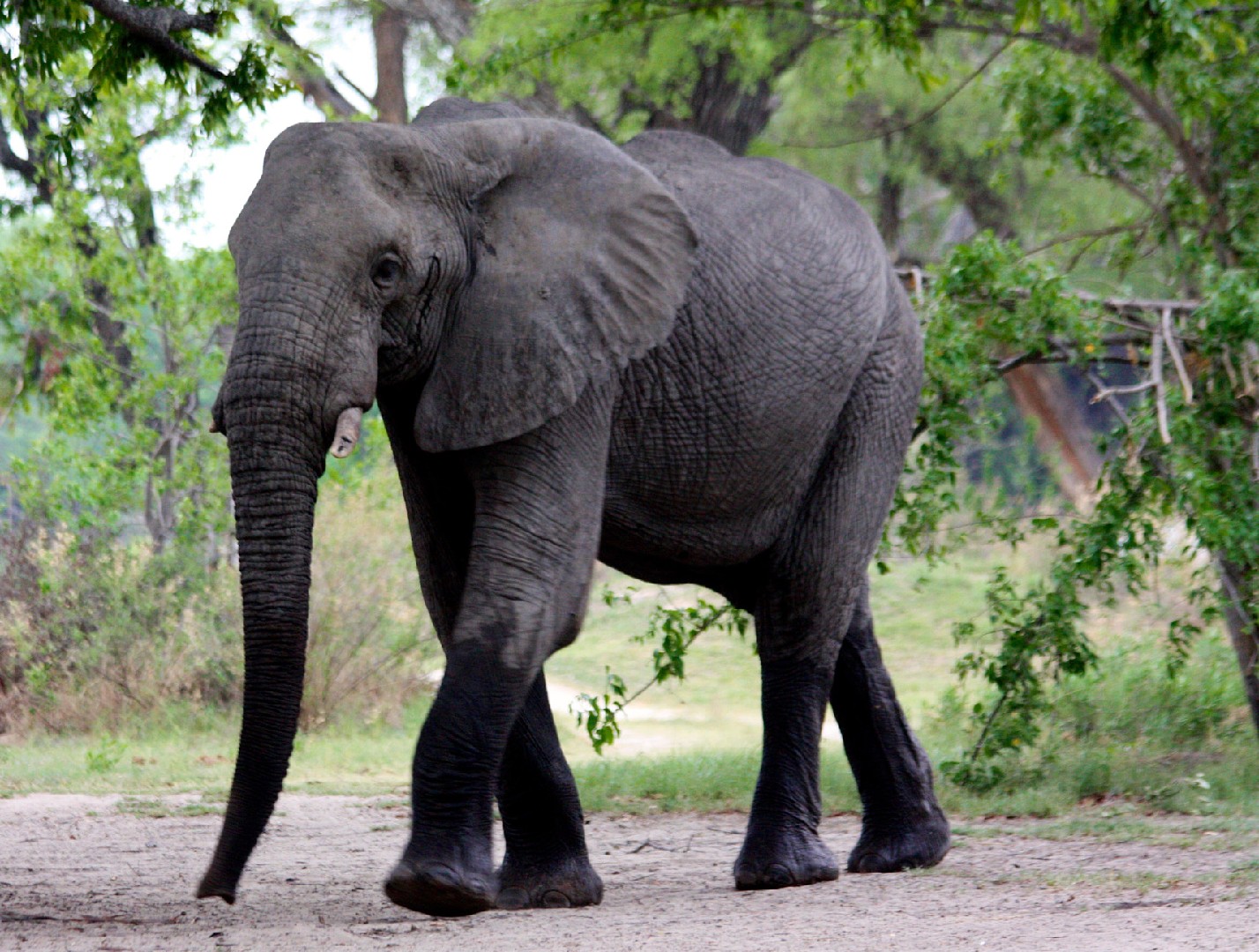African bush elephant
A species of African elephant, Also known as Desert elephant, Desert-adapted elephants, Maasai elephant Scientific name : Loxodonta africana Genus : African elephant
African bush elephant, A species of African elephant
Also known as:
Desert elephant, Desert-adapted elephants, Maasai elephant
Scientific name: Loxodonta africana
Genus: African elephant
Content
Description General Info
 Photo By Rad Dougall , used under CC-BY-3.0 /Cropped and compressed from original
Photo By Rad Dougall , used under CC-BY-3.0 /Cropped and compressed from original Description
The savanna elephant is the largest land animal. A bull weighs between 4000 and 6300 kilograms, a cow 2200 to 3500 kilograms. They become 240 to 340 centimeters high and 600 to 730 centimeters long. The tail is one to one and a half meters long. Its thick skin is light gray to black gray or brown in color. Sometimes the species has pink skin, often in spots, sometimes all over the skin. The large ears are rich in blood, so they can cool the body. A lot of heat can escape through the ears when the elephant waving with this. The elephants also have some places on the body, including the ears, where the veins come close to the surface. The elephants can increase the blood flow to these places so that their blood cools down. The large tusks bent forward differ in shape and size per individual. They grow throughout their lives, but not to the same extent with every individual. Both males and females have tusks. The legs are high and columnar and rest on cushions. These cushions are very soft, so that the animal hardly makes any noise when moving. The paw prints are different for each individual. While walking they always have 3 legs on the floor. An elephant who is seriously injured on one of his legs is killed, he is no longer able to move. The trunk of the savanna elephant is long and flexible, and can be used as a fifth limb. The top of the trunk is very sensitive. The savanna elephant has poor eyesight, but very well developed sense of smell and hearing.
General Info
Lifespan
60-70 years
Diet
African bush elephant's diet is herbivorous, with a strong affinity for a variety of vegetation. Bark, leaves, roots, and fruit make up the majority of its consumption, but it particularly favors the wood pulp of certain tree species.
Appearance
African bush elephant is a large mammal with a bulky body covered in tough, wrinkled grey skin. Notable features include long curved tusks, large fan-like ears, and a versatile, elongated trunk. The size and curve of the tusks can be larger in males, while the young ones are smaller with more hair on the head and back. No significant variations exist between subspecies in terms of color or overall appearance.
Behavior
African bush elephant are social creatures, existing in matriarchal groups called herds. These herds communicate through infrasound and physical contact. Known for their memory, they exhibit mourning behavior upon encountering remains of their kin. Notably, african bush elephant display tool usage, manipulation of objects for foraging and self-care. Territorially, males are solitary, marking ranges via gland secretions. Their behavior evolves with environments, aptly adapting to protect from predators and harsh climates.
Population
Decreasing
Scientific Classification
Phylum
Chordates Class
Mammals Order
Elephants Family
Elephants and mammoths Genus
African elephant Species
African bush elephant